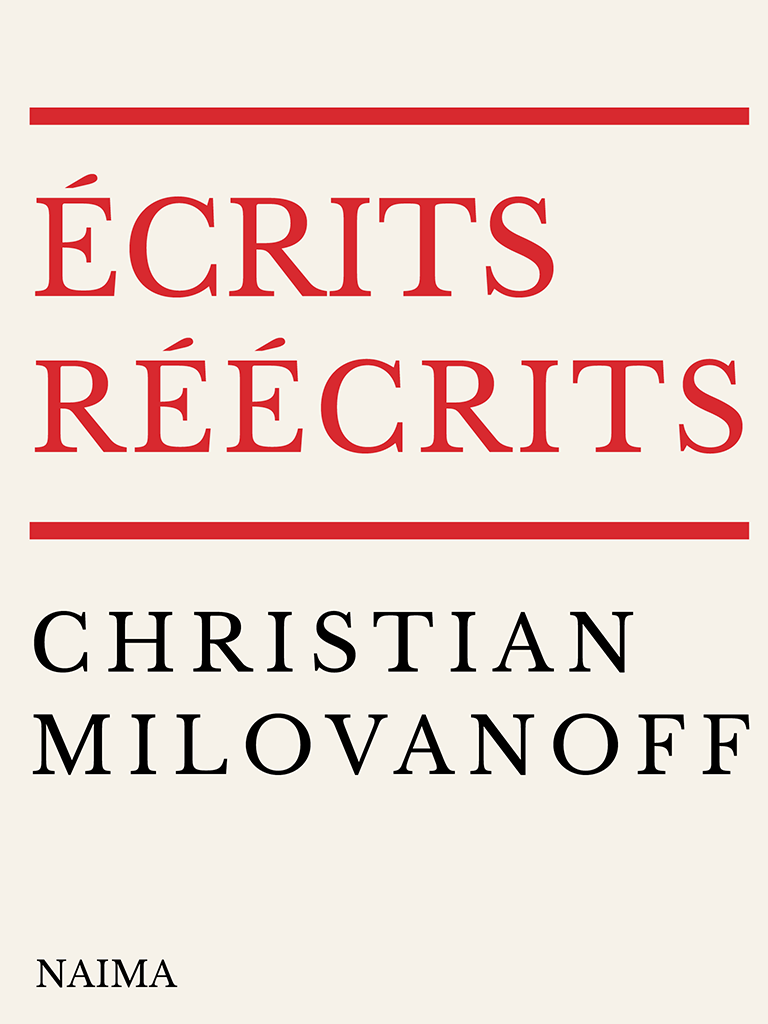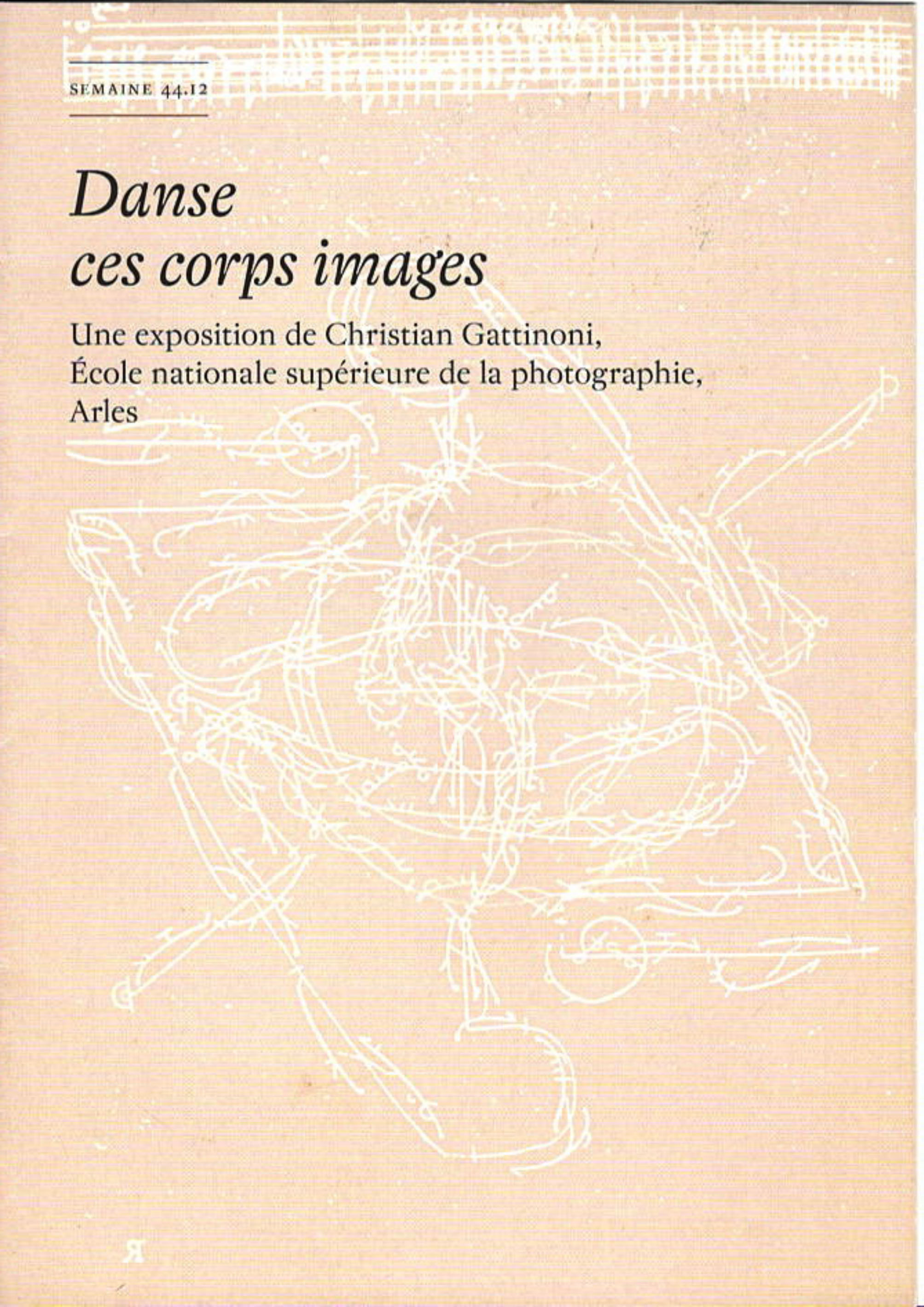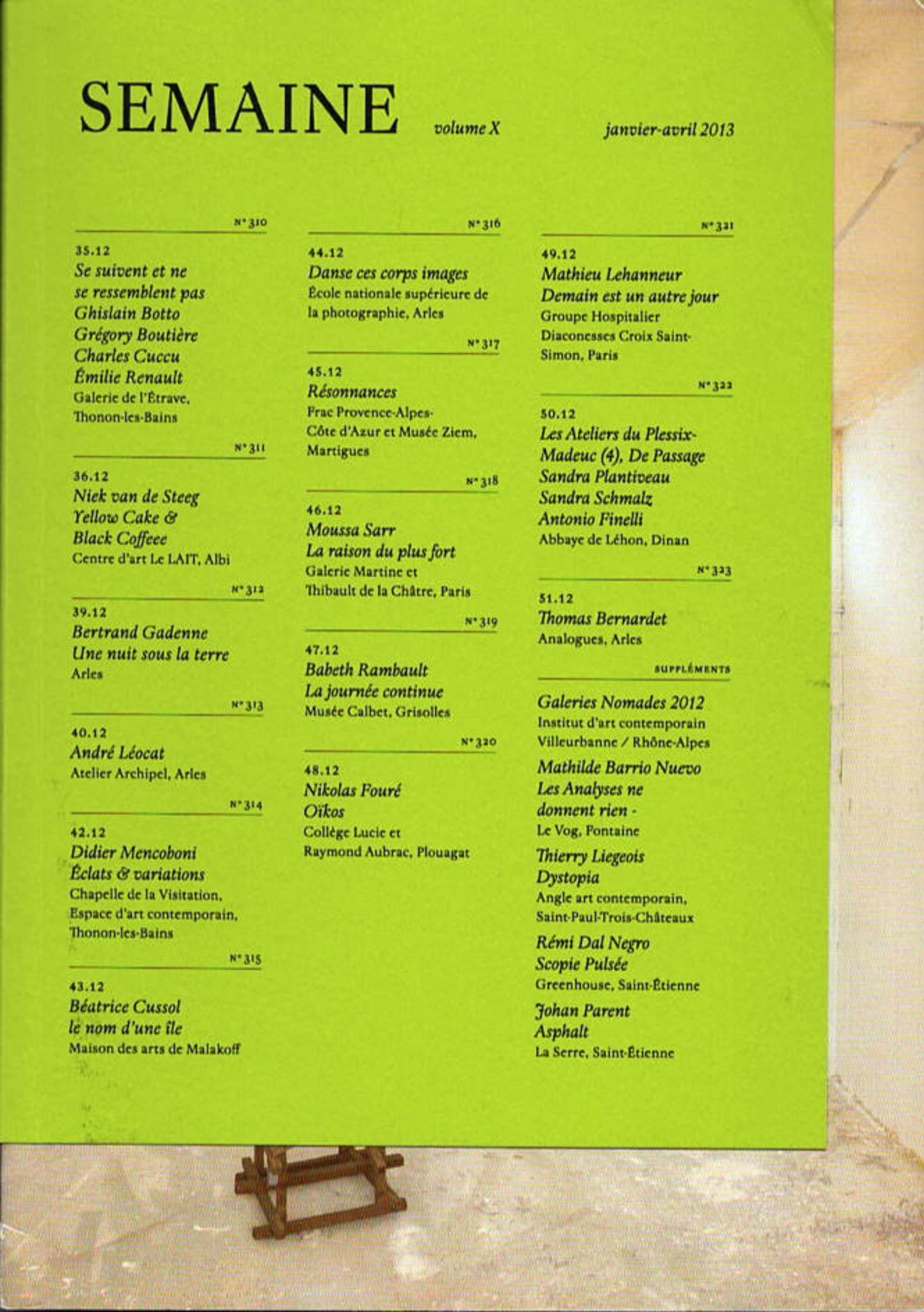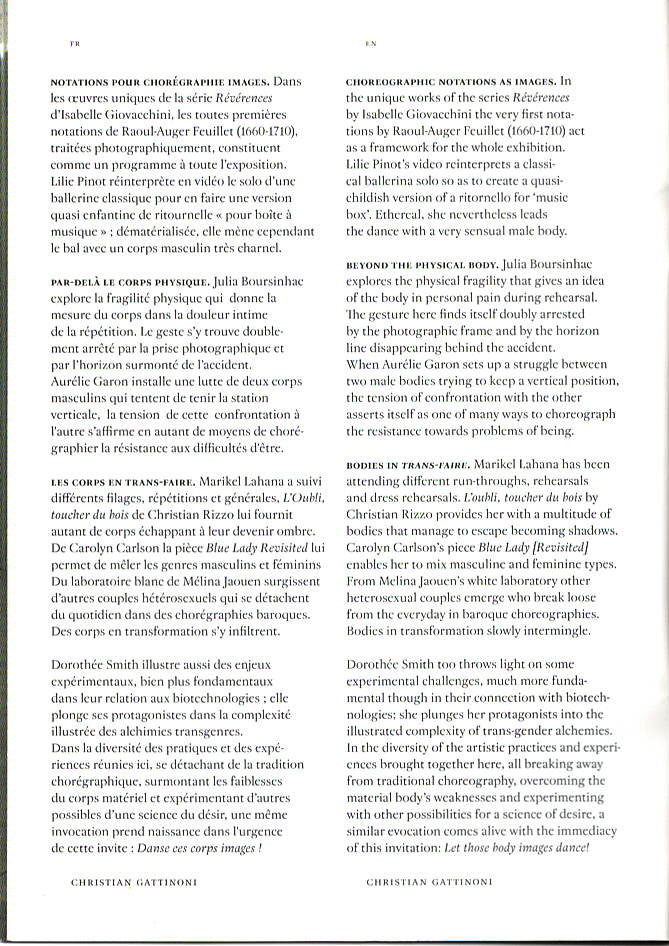TEXTS & PUBLICATIONS
TEXTS
“De l’intranquillité”/ “On Disquiet” (english version below)
Prix Ekphrasis (ADAGP et AICA), Texte de Véronique Terrier Hermann, Le Quotidien de l’Art
ICI
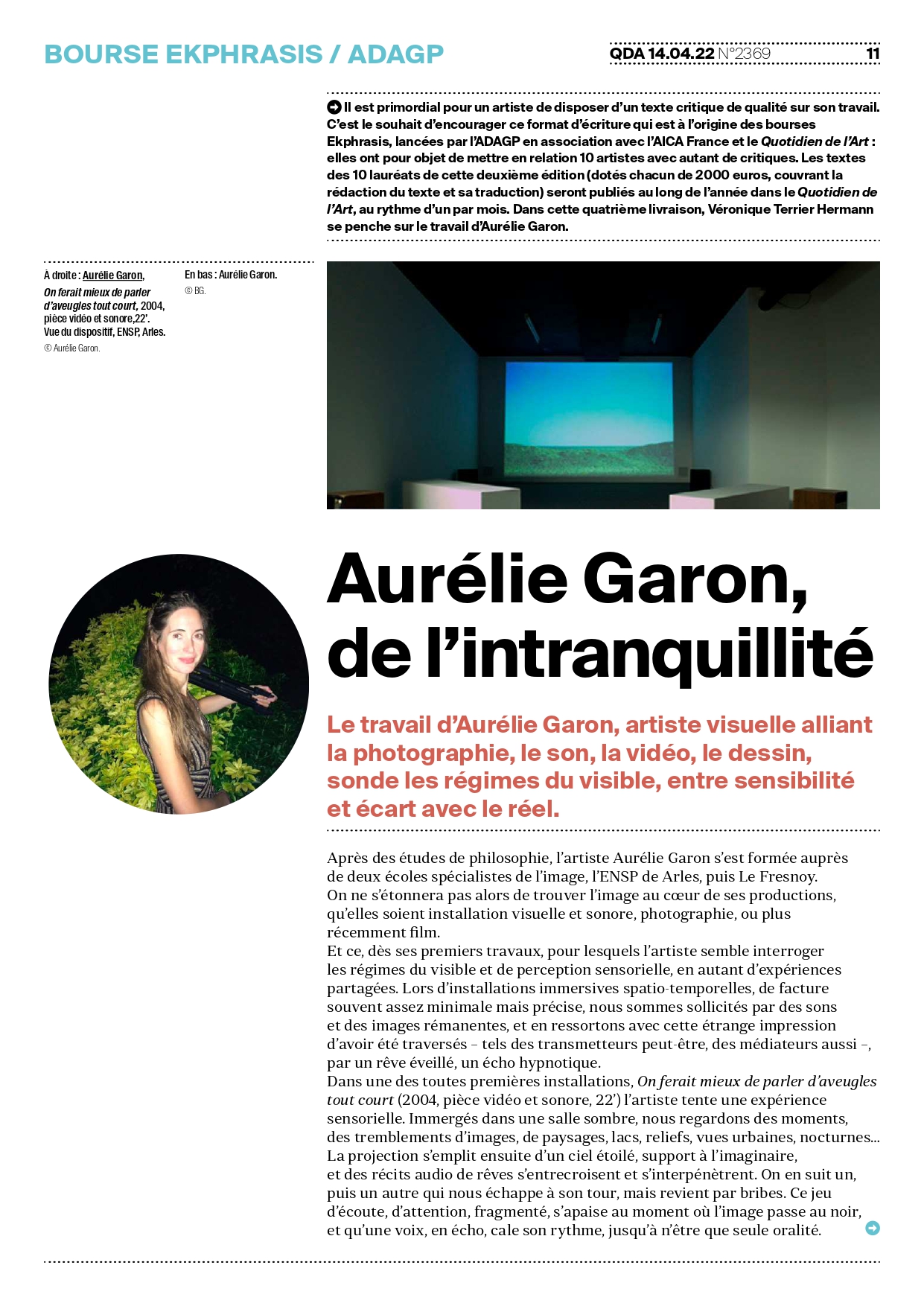
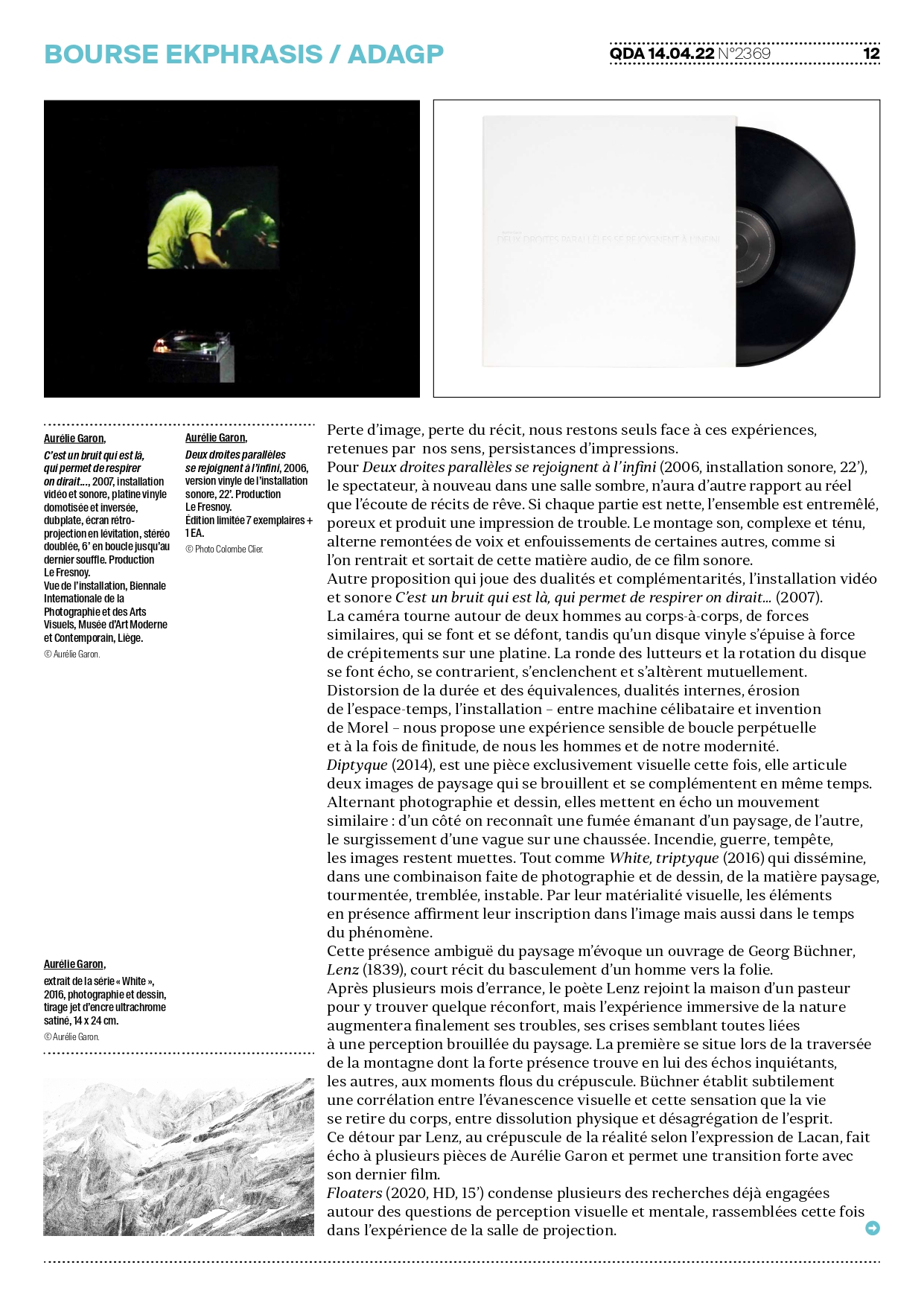
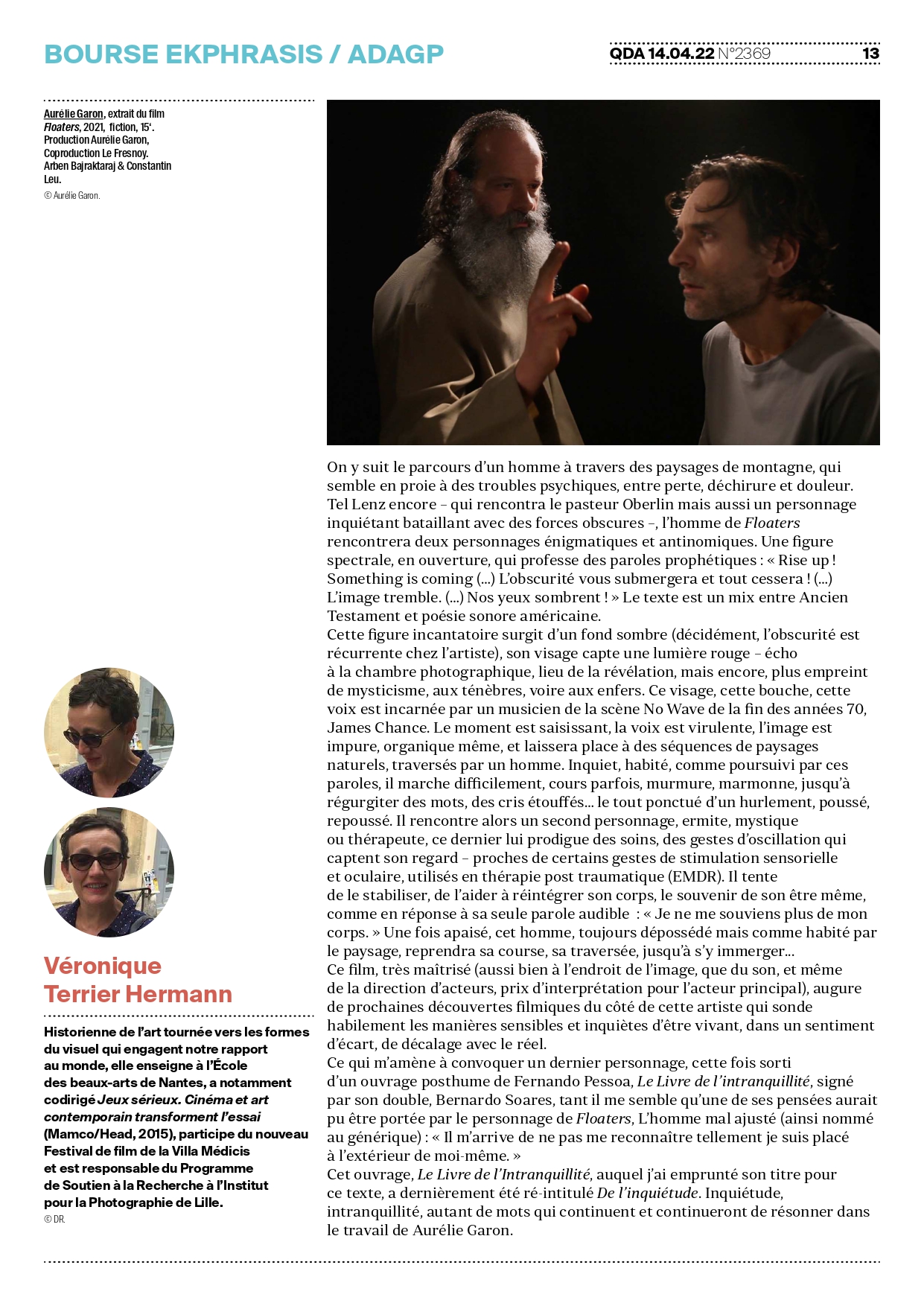
On Disquiet
The work of Aurélie Garon, a visual artist combining photography, drawing, video and sound, probes the regimes of the visible, between sensitivity and discrepancy with reality.
After studying philosophy, Garon trained at two schools specializing in image-making, the ENSP in Arles and then Le Fresnoy. It is therefore not surprising to encounter the image at the core of her productions, whether they are visual and sound installations, photography or, more recently, film.
And this has been a constant from her earliest works, in which the artist seems to question the regimes of the visible and of sensory perception, in so many shared experiences. In spatio-temporal immersive installations, often of a precise, minimal construction, we are solicited by sounds and afterimages, and emerge with the strange impression of having been traversed - as transmitters perhaps, as mediators too - by a waking dream, a hypnotic echo.
In one of the very first installations, It Would Be More Correct to Speak of the Blind and Leave it at That (On ferait mieux de parler d'aveugles tout court) (2004, video and sound, 22') the artist attempts a sensory experience. Immersed in a dark room, we watch moments, tremulous images, landscapes, lakes, reliefs, urban views, night views... The projection then fills with a starry sky, a support for the imaginary, and audio narratives of dreams intersect and interpenetrate.
We follow one, then another, which escapes us in turn, but returns in snippets. This game of listening, of attention, fragmented, alleviates itself when the image turns to black, and a voice, as an echo, sets its rhythm, until only sound remains. Loss of image, loss of narrative: we remain alone in the face of these experiences, retained by our senses, a persistence of impressions.
In Two Parallel Lines Meet at Infinity (Deux droites parallèles se rejoignent à l’infini) (2006, sound installation, 22'), the spectator, once again in a darkened room, will have no other relationship to the real than listening to dream stories. If each part is sharp, the whole is intertwined, porous, and produces an impression of confusion. The sound montage, complex and tenuous, alternates the rising of some voices and the receding of others, as if we were entering and leaving this audio material, this sound film.
Another proposal that plays on dualities and complementarities is the video and sound installation It’s a Noise that is There, which Enables Breathing, One Could Say... (C’est un bruit qui est là, qui permet de respirer on dirait... ) (2007). The camera revolves around two men of similar strength, facing up to each other, who engage and disengage, whilst a crackling vinyl record is eroded by the relentless rotation of a turntable. The round of the wrestlers and the rotation of the record echo, counteract, snap-in and alter each other. Distortion of duration and equivalence, internal dualities, erosion of space-time, the installation - between a single machine and Morel's invention - offers us a sensitive experience of perpetual looping and at the same time of finitude, of we humans and of our modernity.
Diptych (Diptyque) (2014), an exclusively visual piece this time, articulates two images of landscape that blur and complement each other simultaneously. Alternating photography and drawing, they echo a similar movement: on the one hand, one recognizes smoke emanating from a landscape; on the other, the eruption of a wave on a road. Fire, war, storm, the images remain silent. Just like White, a Triptych(White, tryptique) (2016), which disseminates, in a combination of photography and drawing, landscape matter, tormented, shaken, unstable. Through their visual materiality, the present elements assert their inscription in the image but also in the time of the phenomenon.
This ambiguous presence of the landscape reminds me of a work by Georg Büchner, Lenz(1839), a short tale of a man's slide into madness.
After several months of wandering, the poet Lenz joins a pastor's house to find some comfort, but the immersive experience of nature will eventually increase his troubles, his crises all seeming to be linked to a hazy perception of the landscape. The first is during the crossing of the mountain, whose strong presence finds in him unsettling echoes; the others at the blurred moments of twilight. Büchner subtly establishes a correlation between visual evanescence and this sensation that life is withdrawing from the body, between physical dissolution and disintegration of the spirit. This detour through Lenz, at the twilight of reality, according to Lacan's expression, echoes several of Garon's pieces and enables a strong transition to her latest film.
Floaters(2020, HD, 15') condenses several of the strands of research already undertaken around questions of visual and mental perception, brought together this time in the experience of the projection room.
Through mountain landscapes, we follow the journey of a man who seems to be in the grip of psychic troubles, between loss, heartbreak and pain. Like Lenz again - who met the pastor Oberlin, but also a disturbing character fighting with dark forces - the man in Floaters will meet two enigmatic and antinomic characters. A spectral figure, in the opening, who utters prophetic words: ‘Rise up! Something is coming (...) Darkness will cover you, putting an end to it all! (...)The image is trembling. (...) Our eyes fall!’ The text is a blend of The Old Testament and American sound poetry.
This incantatory figure emerges from a dark background (darkness is an emphatic and recurring element in the artist's work). His face captures a red light - an echo of the photographic camera, the place of revelation, but also, more mystically, of the underworld, or even Inferno. This face, this mouth, this voice is embodied by a musician of the No Wave scene of the late 1970s, James Chance. The moment is striking, the voice is virulent, the image is impure, organic even, and will give way to sequences of natural landscapes, crossed by a man. Worried, inhabited, as if pursued by these words, he walks with difficulty, sometimes runs, murmurs, mumbles, until he regurgitates words, muffled screams... all punctuated by a howl, pushed, pushed back. He then meets a second character, a hermit, a mystic or therapist. This last provides him with care, oscillating gestures which capture his look - similar to certain gestures of sensory and ocular stimulation used in post-traumatic therapy (EMDR). The second character tries to stabilize the first, to help him reintegrate his body, the memory of his very being, as if in response to his only audible words: ‘I can’t remember my body anymore’. Once appeased, this man, still dispossessed but as if inhabited by the landscape, will resume his race, his crossing, until he is immersed into it...
This film, very well mastered (as much in the image as in the sound, and even in the direction of the actors, with an interpretation prize for the main actor), augurs well for future filmic discoveries on the part of this artist, who skillfully probes the sensitive and worried ways of being alive, in a feeling of a gap, of discrepancy with the real.
This leads me to summon a last character, this time taken from a posthumous work by Fernando Pessoa, The Book of Disquiet, signed by his double, Bernardo Soares. It seems to me that one of his thoughts could have been carried by the character of Floaters, the ill-fitting man (so named in the credits): ‘having become so completely external to myself, I sometimes no longer recognize myself.’
The Book of Disquiet is the volume from which I sourced the title of the present text - disquiet, a word that continues and will continue to resonate in the work of Aurélie Garon.
Véronique Terrier Hermann
Text written in the context of the Ekphrasis grant, with the support of the ADAGP, the AICA France and the Quotidien de l'Art.
Translation: Joséphine Michel
Prix Ekphrasis (ADAGP et AICA), Texte de Véronique Terrier Hermann, Le Quotidien de l’Art
Christian Milovanoff, lacritique.org 2017
“… QUI EST LÀ
C’est une lutte à laquelle ils se livrent, c’est une lutte qui est là et non un spectacle, même si nous, devant, nous en sommes les regardeurs. On voit les bras des combattants, le haut de leurs corps seulement. Ils sont deux s’agrippant l’un l’autre, puis un disparaît, puis les deux pour revenir ensuite et continuer la joute.
Comme plusieurs notes tressées pour n’en faire qu’une, c’est aussi un bruit que l’on entend, en continu et qui, pareil aux actions des protagonistes, s’interrompt, s’efface pour réapparaître ensuite, inchangé, invariable.
C’est du cinéma qui est là, celui d’Aurélie Garon : du bruit «cou coupé » et des images, la rencontre de toutes les métamorphoses possibles, le lieu même de l’imagination.”
« Qu’avez-vous fait de la photographie? », éditions Actes Sud, France 2013
“La photographie comme Khôra”, Aurélie Garon
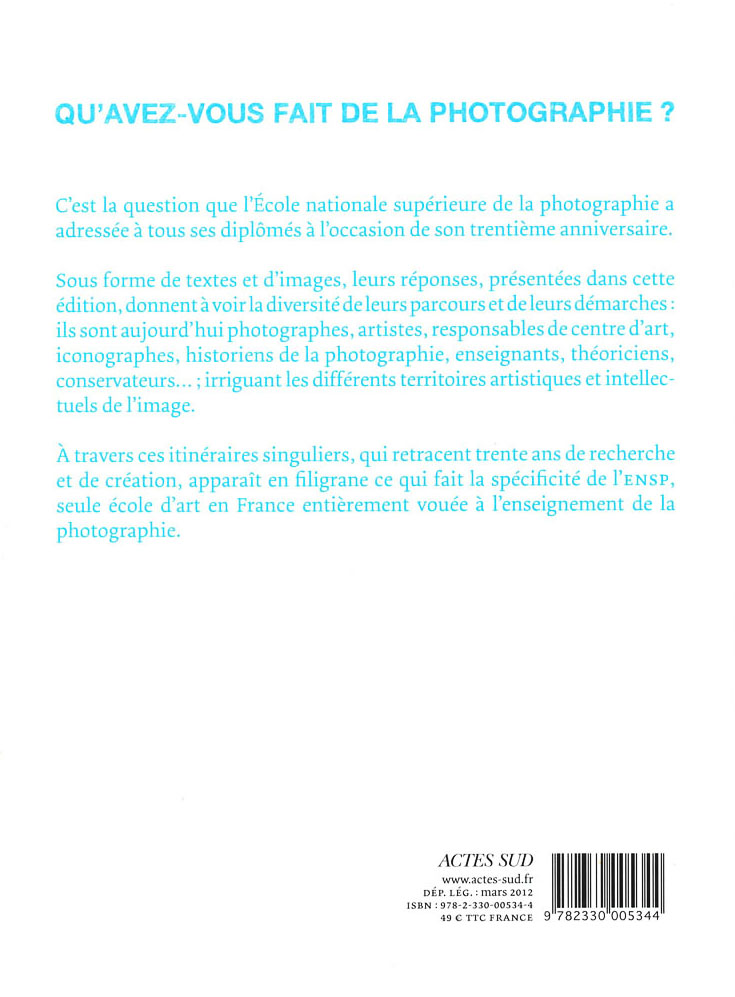


Anne-Françoise Lesuisse, Out Of Control, «Les Indomptés», 7th International Biennial of Photography and Visual Arts, Liège, Belgium2010
“Aurélie Garon est philosophe de formation et plasticienne. Par le biais de ses installations sonores ou vidéos, elle tente d’esquisser les contours de la présence humaine au monde. Elle dresse une cartographie sensitive d’où émerge souvent un principe de résistance au réel, un sentiment d’écart. Elle matérialise, physiquement et visuellement, ces tensions délicates qu’engendrent nos relations au monde. Dans l’installation ici exposée, deux réalités sont jumelées : un tourne-disque qui fonctionne à l’envers et une vidéo qui possède son propre espace-temps. Celle-ci présente un combat entre deux hommes. Une lutte qui prend la forme ambigüe d’une volonté de rapprochement fusionnel tout autant que d’une distanciation existentielle. A nouveau, l’artiste propose une expérience temporelle cyclique qui témoigne sensiblement de notre volonté d’exister dans ce monde mouvant.”
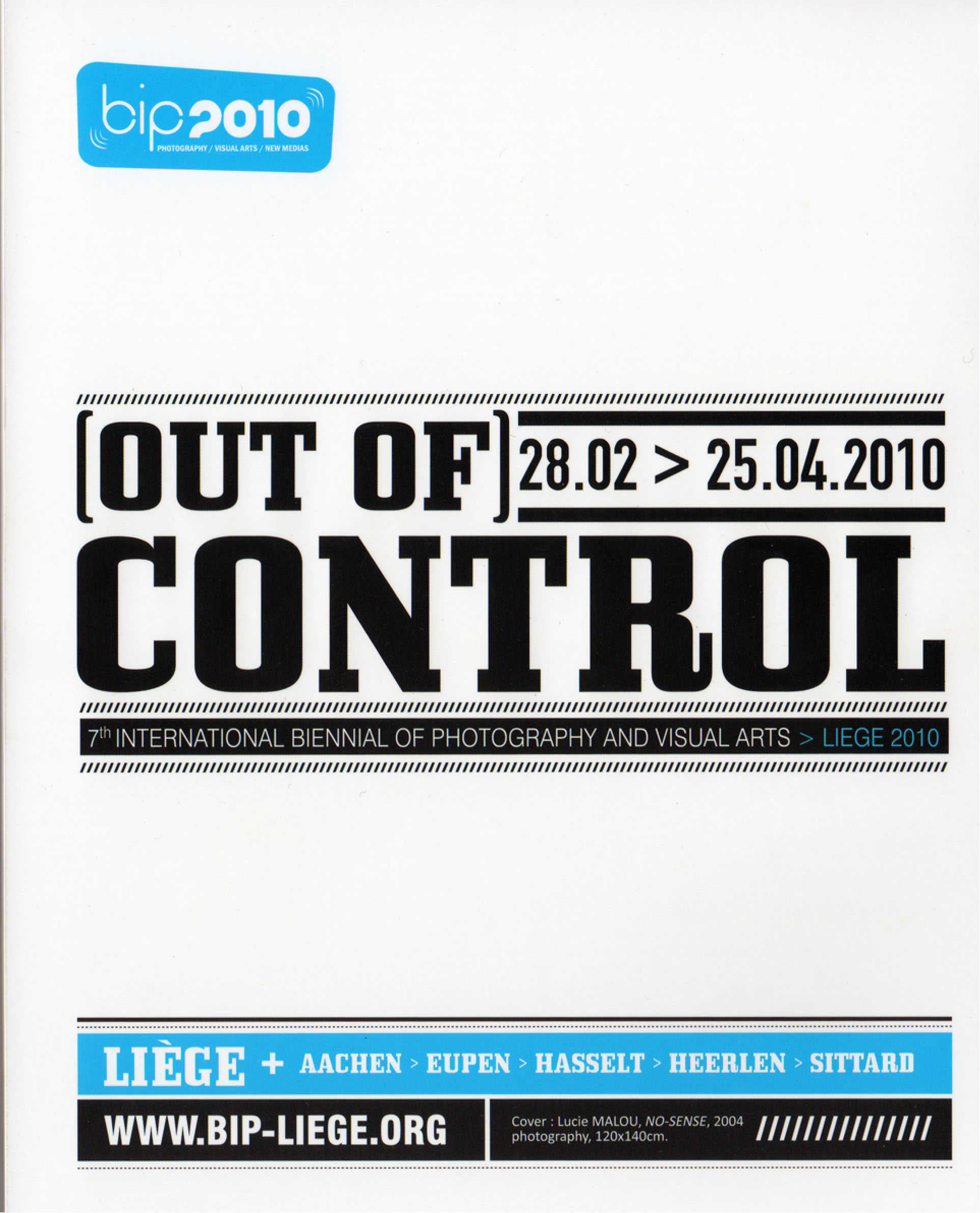
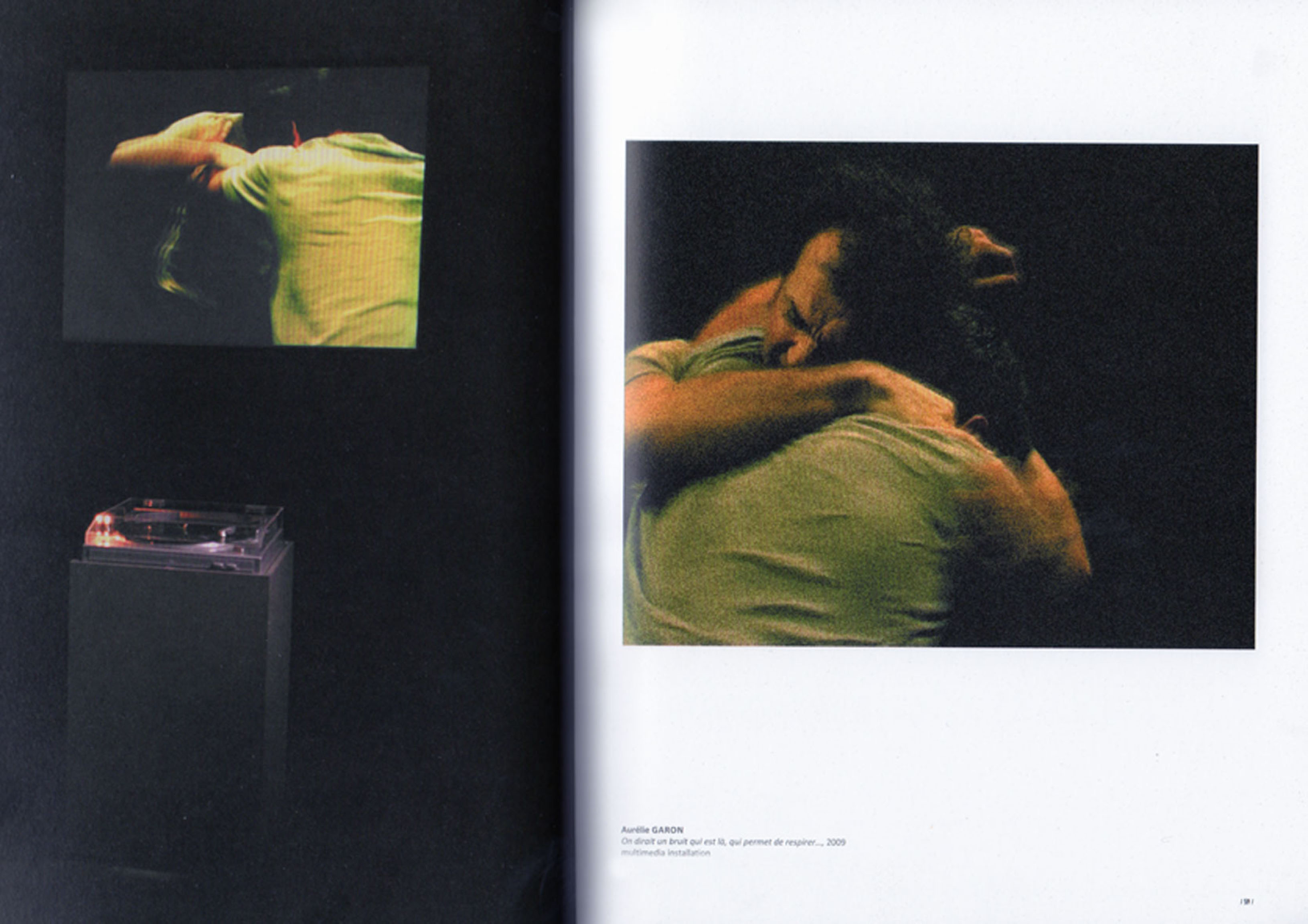
Holger Birkholz,
Kassel 2007
24th Documentary Film and Video Festival (DokFest)
Kassel, Germany
“INTERFICTION IN KASSEL
Aurélie Garon’s installation consists of two related components – to begin with a record player on which the turntable rotates in the opposite direction, and then a video projection which shows two men fighting with each other. Little by little, the record is abraded and in the process changes the video image. The temporal experience of a continual repetition in the rotation of the turntable, the circling movements of the fighting men, the gradual decomposition of the substance in the wearing away of the vinyl all come into relation with one another. This build-up implies its own inescapable end.
Garon characterises the struggle of the two men as follows : “It is not a real fight, rather something more ambivalent, an embracing and distancing of bodies. It is a struggle against gravity. The efforts of the two are expended on themselves and not against each there. The object is to remain upright. It is a struggle that is necessary in a metaphysical sense, a struggle against the horizontal, without victor and vanquished.” The closeness of the representation binds the viewer of the events shown. This closeness also occurs through the camera, which circles the two wrestlers at varying speeds. At times, it is almost impossible to distinguish the movements of the camera from those of the two bodies. Then the speed increases, the camera circling the two players at a more rapid tempo. The alternating speed gives a reeling impression; the camera’s rise and fall can not be predicted, forcing the viewer to go along with the action, to surrender to the vertigo.
In a similar fashion, the sound in the room alternates between louder and more quiet phases. It grows more intense and then diminishes, sometimes in short intervals and then very slowly. The atmospheric sound focuses our concentration on the actions of the wrestlers. It surrounds the viewers in its sonorous uniformity as does the dance-like struggle between the two bodies.
The source of the sound in the exhibition space is a record player that generates sound on a physical basis. The needles glides over the record grooves, eliciting varying vibrations in the needle. The weight of the needle, dust particles or shaking of the device all have an impact on the surface of the record, which is gradually abraded. Rustling, hissing sounds are a clear indication of this ongoing wear. But in Garon’s work, the wear of the record is also reflected in a modification of the images. The colours begin to fade. The monochrome character of the image consisting of the cold beige tones of the shirts and trousers of the wrestlers together with their pale skin colour gradually becomes warmer. Little by little the images become grainier, while at the same time becoming less bright. Just as the record is ultimately destroyed by endless replaying, so too does the video image disintegrate…until the final breath is taken.

Brenda Goldstein, POV magazine, Toronto, Canada2008
“KASSEL CONFIDENTIALIt is good to watch Aurelie Garon’s piece «C’est un bruit qui est là, qui permet de respirer on dirait...» («It seems it’s a noise that allows you to breathe...») while realizing that oxygen gives us life but the act of respiration causes our tissues to oxidize and deteriorate over time. It is this paradox that Garon’s installation captures with a projection of two men fighting without purpose or determination. Neither scores a TKO; neither goes down; the fight continues, half hearted, at a stalemate. The violence is futile. In front of the projection is a record player. The video is being played from the vinyl itself, a device of Garon’s invention, but the player turns in the opposite direction than it should, causing the needle to slowly etch away the image, degrading it slightly with each play. This piece is striking for its refined sensibility, its clever use of analogue media to describe the epehemerality of the digital signal. At the same time this ugly scene manages to touch on the sublime paradox at the centre of life.”

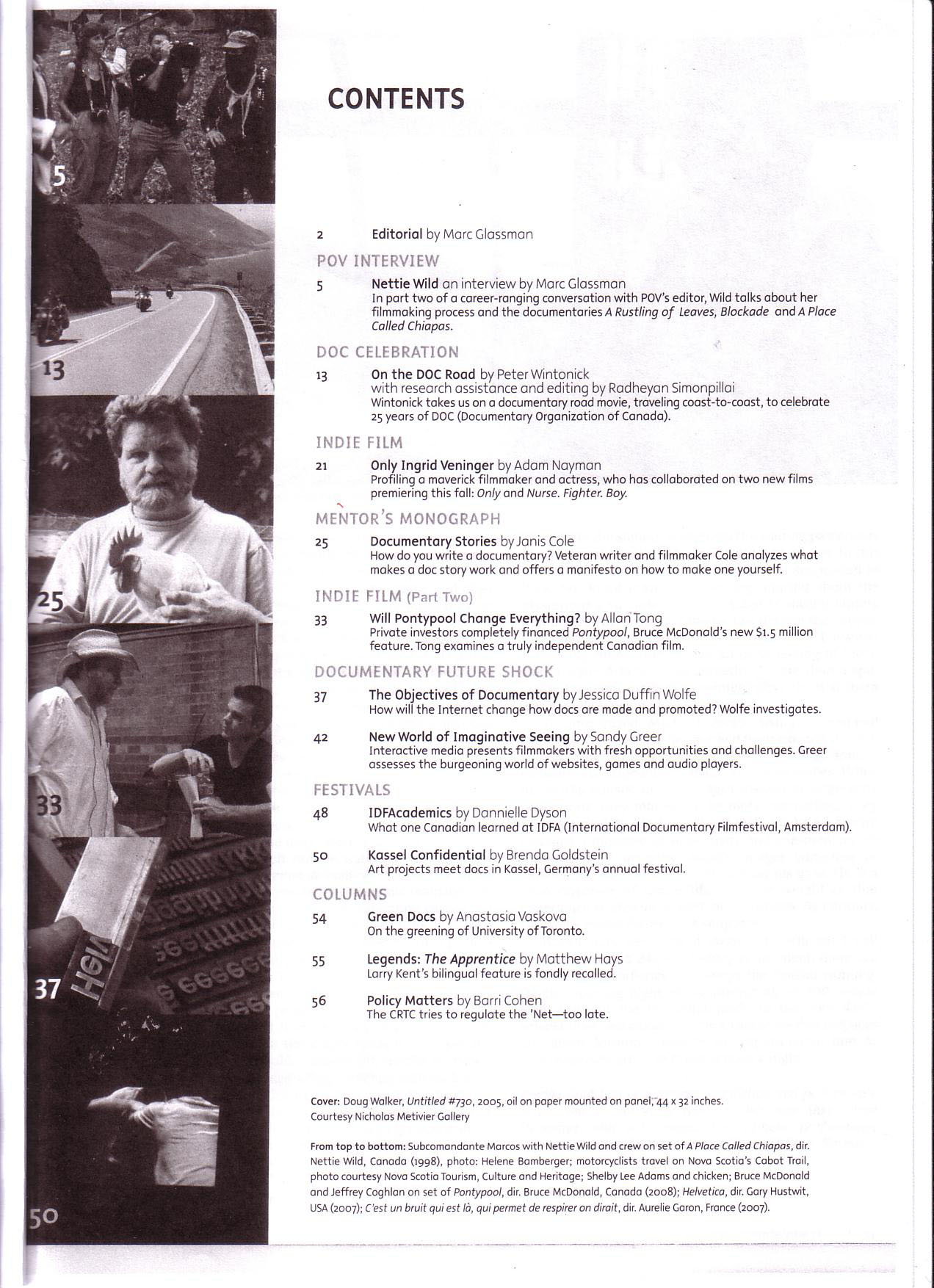

PUBLICATIONS
2013
L’état du monde, Traverse vidéo, Toulouse, France
![]()
![]()
2012
"Qu’avez-vous fait de la Photographie?" (Collective book), 400 pages, éditions Actes Sud, France
- « Ceux qui arrivent », Le BAL ,Paris, France
- Goethe Institut, Lyon, France
- Oodaaq International Videoart Festival, Rennes, France
![]()
![]()
2011
Monobandes, Galerie Les Territoires, Montréal, Canada
2010
- Festival Vidéographies, Cinéma Sauvenière, Liège, Belgium
- 7th International Biennial of Photography and Visual Arts, Out of control, Liège, Belgium
![]()
2009
- Festival Accès(s), Pau, France
![]()
- Percept VideoBox 1.0, Bruxelles, Belgium
- Nuit Blanche Le off, TRANS-paraître, Ubic, Paris, France
2008
- Biennale d’art contemporain, Panorama Jeune Création, Bourges, France
- POV magazine (article), Toronto, Canada
![]()
![]()
![]()
2007
- 24th Documentary Film and Video Festival, Kassel, Germany
![]()
- Panorama 8, Notre meilleur monde, Le Fresnoy, Lille, France
![]()
![]()
2006
Panorama 7, Présumés coupables, Le Fresnoy, Lille, France Traverse Vidéo, Toulouse, France
![]()
![]()
2005
De près, de loin, Conservatoire des arts et métiers du multImédia, LAAC (Lieu d’Art et d’Action contemporaine), Bamako/Dunkerque, Mali/ France
2004
WIP, Rencontres d'Arles, France
L’état du monde, Traverse vidéo, Toulouse, France


2012
"Qu’avez-vous fait de la Photographie?" (Collective book), 400 pages, éditions Actes Sud, France
- « Ceux qui arrivent », Le BAL ,Paris, France
- Goethe Institut, Lyon, France
- Oodaaq International Videoart Festival, Rennes, France

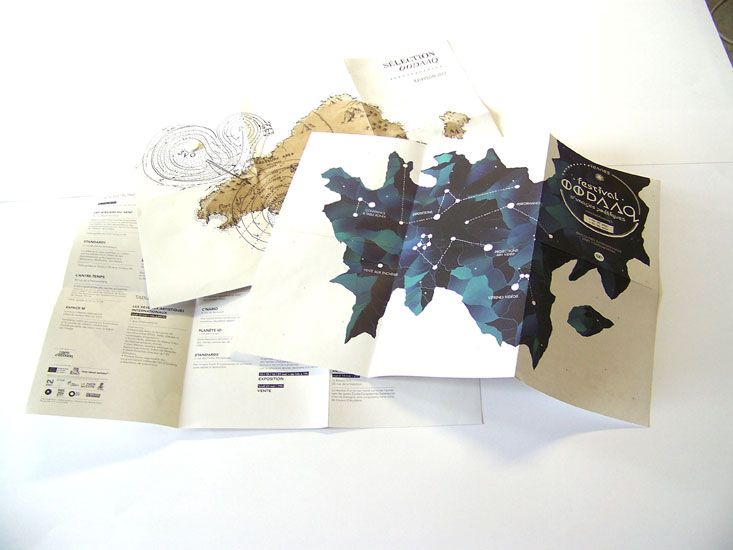
2011
Monobandes, Galerie Les Territoires, Montréal, Canada
2010
- Festival Vidéographies, Cinéma Sauvenière, Liège, Belgium
- 7th International Biennial of Photography and Visual Arts, Out of control, Liège, Belgium

2009
- Festival Accès(s), Pau, France
︎︎

- Percept VideoBox 1.0, Bruxelles, Belgium
- Nuit Blanche Le off, TRANS-paraître, Ubic, Paris, France
2008
- Biennale d’art contemporain, Panorama Jeune Création, Bourges, France
- POV magazine (article), Toronto, Canada



2007
- 24th Documentary Film and Video Festival, Kassel, Germany

- Panorama 8, Notre meilleur monde, Le Fresnoy, Lille, France


2006
Panorama 7, Présumés coupables, Le Fresnoy, Lille, France Traverse Vidéo, Toulouse, France


2005
De près, de loin, Conservatoire des arts et métiers du multImédia, LAAC (Lieu d’Art et d’Action contemporaine), Bamako/Dunkerque, Mali/ France
2004
WIP, Rencontres d'Arles, France


